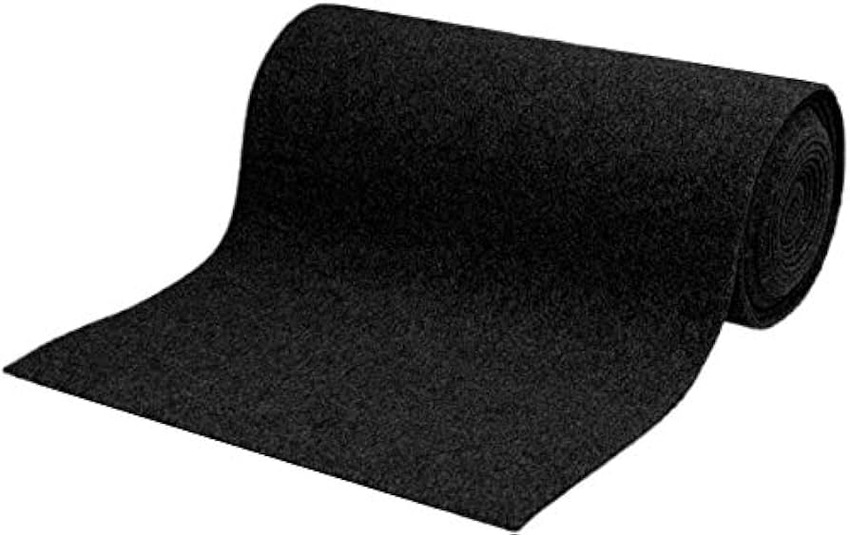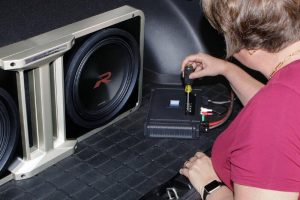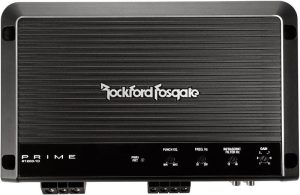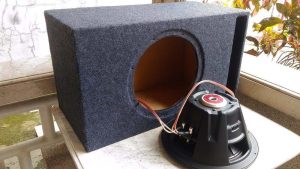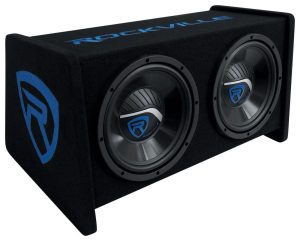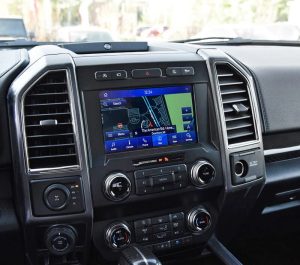When upgrading your car’s audio system, you focus on powerful subwoofers, crisp speakers, and a high-quality head unit. But one detail often slips under the radar: the subwoofer box carpet. This seemingly minor component sparks debates among car audio enthusiasts. Is carpeting your subwoofer box essential, or is it just an aesthetic choice? Let’s dive into the role of subwoofer box carpeting, its benefits, drawbacks, and whether it deserves a spot in your car stereo upgrade. By the end, you’ll know if this feature aligns with your audio goals.
Contents
- What Is a Subwoofer Box Carpet?
- Why Consider Carpeting Your Subwoofer Box?
- Are There Any Downsides to Subwoofer Box Carpeting?
- How to Choose the Right Subwoofer Box Carpet
- DIY vs. Professional Carpeting: Which Is Better?
- Alternatives to Subwoofer Box Carpeting
- Does Carpeting Affect Subwoofer Performance?
- Final Thoughts: Is Subwoofer Box Carpeting Worth It?
What Is a Subwoofer Box Carpet?
A subwoofer box carpet is a durable, fabric-like material wrapped around the enclosure housing your subwoofer. Typically made from polyester or nylon blends, it mimics the texture of household carpeting but is tougher to withstand the wear and tear of a car environment. Manufacturers design these it to protect the subwoofer enclosure, enhance its appearance, and sometimes improve sound quality. Available in various colors and textures, subwoofer box carpeting comes in pre-cut rolls or custom-fit designs, making it easy to apply to DIY or professionally built enclosures.
Carpeting serves multiple purposes. It shields the wooden or MDF (medium-density fiberboard) box from scratches, dents, and moisture. It also gives the setup a polished, professional look, blending seamlessly with your car’s interior. But does it impact the bass output or overall audio experience? Let’s explore.
Why Consider Carpeting Your Subwoofer Box?
Adding a carpet to your subwoofer box offers several advantages, from practical protection to aesthetic appeal. Here’s why many car audio fans swear by it:
1. Protects the Subwoofer Enclosure
Subwoofer boxes endure a lot in a car. They face constant vibrations, temperature changes, and occasional bumps from cargo or passengers. A carpet acts like a shield, guarding the box against scratches, scuffs, and dings. For instance, if you store gear in your trunk, an uncarpeted box can quickly show wear. Carpeting absorbs minor impacts, extending the enclosure’s lifespan.
Moisture is another enemy. In humid climates or during rainy seasons, condensation can seep into an unprotected wooden box, causing warping or mold. A quality carpet resists water to some extent, keeping the enclosure dry and structurally sound. This protection ensures your subwoofer performs optimally for years.
2. Enhances Aesthetic Appeal
Let’s be honest: a bare subwoofer box looks unfinished. A raw MDF enclosure screams “DIY project” and can clash with a sleek car interior. Carpeting transforms the box into a professional-grade component. Whether you choose a classic black carpet or a bold color to match your car’s upholstery, it elevates the entire audio setup.
A carpeted box also hides imperfections. If your DIY carpentry skills aren’t perfect, the carpet conceals uneven edges, glue marks, or minor cracks. It creates a cohesive look, making your car’s audio system appear custom-built and high-end. For car show enthusiasts, this visual upgrade is a must to impress judges and fellow audio buffs.
3. Improves Sound Quality (Slightly)
While carpeting won’t drastically change your subwoofer’s bass output, it can make subtle improvements. The material dampens vibrations on the box’s surface, reducing unwanted rattles or resonances that might muddy the sound. This effect is most noticeable in poorly constructed boxes where loose panels vibrate excessively.
Carpeting also minimizes external noise interference. In a noisy car environment, the carpet absorbs some ambient sounds, letting the subwoofer’s low frequencies shine. While not a game-changer, these small tweaks contribute to a cleaner, more immersive audio experience, especially for genres like hip-hop, EDM, or rock that rely on deep bass.
4. Increases Resale Value
A well-maintained, carpeted subwoofer box can boost the resale value of your car audio system. Buyers prefer setups that look and feel premium. A carpeted enclosure signals care and attention to detail, making it more appealing in the used market. Even if you don’t plan to sell, a polished setup adds to your car’s overall value and appeal.
5. Easy to Install and Maintain
Applying a subwoofer box carpet is straightforward, even for beginners. Most carpets come with adhesive backing or can be secured with spray glue and staples. With basic tools like a utility knife and measuring tape, you can wrap the enclosure in under an hour. Maintenance is just as simple—vacuum or wipe down the carpet to keep it looking fresh. This ease of use makes carpeting a low-effort upgrade with high-impact results.
Are There Any Downsides to Subwoofer Box Carpeting?
No upgrade is perfect, and subwoofer box carpeting has its drawbacks. Before you commit, consider these potential issues:
1. Added Cost
While not exorbitantly expensive, carpeting adds to your project’s budget. Quality subwoofer box carpets range from $20 to $100, depending on size, material, and brand. For budget-conscious builders, this cost might seem unnecessary, especially if the box is hidden in a trunk or under a seat. If aesthetics aren’t a priority, you might skip carpeting to save money for other components like a better amplifier or wiring kit.
2. Installation Challenges
Although carpeting is generally easy to apply, mistakes happen. Stretching the material too tightly can cause tears, while loose application leads to wrinkles or bubbles. Corners and edges require precision to avoid fraying or gaps. If you’re not handy with tools, the process can be frustrating, and a botched job might look worse than a bare box. Hiring a professional installer adds to the cost, negating some of the DIY savings.
3. Dust and Debris Magnet
Carpets attract dust, pet hair, and dirt, especially in a car’s trunk. Over time, the carpet can look grimy if not cleaned regularly. Spills or leaks (like from groceries or sports gear) can stain the material, requiring deeper cleaning or replacement. For those who prioritize a pristine car interior, this extra maintenance might feel like a hassle.
4. Limited Acoustic Impact
If you’re hoping carpeting will transform your subwoofer’s sound, you might be disappointed. The acoustic benefits are minimal, particularly for well-built boxes with tight seals and sturdy materials. In high-end setups, the difference in sound quality is often negligible, making carpeting more about looks than performance.
5. Heat Retention
In hot climates, carpeting can trap heat around the subwoofer box, potentially affecting the subwoofer’s performance. While modern subwoofers are designed to handle heat, prolonged exposure to high temperatures can degrade components over time. Proper ventilation and box placement can mitigate this, but it’s worth considering if your car lacks air conditioning or sits in the sun for long periods.
How to Choose the Right Subwoofer Box Carpet
Not all carpets are created equal. To get the most out of your subwoofer box carpeting, keep these factors in mind:
1. Material Quality
Opt for durable, automotive-grade carpets designed for car audio use. Polyester and nylon blends are popular for their strength and resistance to fading. Avoid cheap, thin carpets that tear easily or lose color after a few months. Brands like SoundBox and Rockville offer reliable options tailored for subwoofer enclosures.
2. Color and Texture
Choose a color that complements your car’s interior. Black is a safe, versatile choice, but grays, reds, or custom patterns can add flair. Texture matters too—thicker, plush carpets look luxurious but collect more debris, while smoother options are easier to clean but less forgiving of imperfections.
3. Size and Fit
Measure your subwoofer box carefully to ensure you buy enough carpet. Most rolls come in standard widths (e.g., 40” or 54”), so calculate the surface area of all sides, including seams and overlaps. Pre-cut kits are available for popular box sizes, saving you time and reducing waste.
4. Adhesive Compatibility
Check whether the carpet requires specific adhesives or comes with built-in backing. Spray adhesives like 3M Super 77 are popular for their strong hold and easy application. Test the adhesive on a small area first to ensure it doesn’t damage the carpet or box material.
5. Brand Reputation
Stick with reputable brands known for car audio accessories. Read reviews from other enthusiasts to gauge durability, ease of installation, and overall value. Forums like CarAudio.com or Reddit’s r/CarAV community are great places to find recommendations.
DIY vs. Professional Carpeting: Which Is Better?
Deciding whether to carpet your subwoofer box yourself or hire a pro depends on your skills, budget, and goals. Here’s a quick comparison:
DIY Carpeting
- Pros: Cost-effective, customizable, and satisfying for hands-on enthusiasts. You control the process and can experiment with colors or textures.
- Cons: Requires time, patience, and basic tools. Mistakes can lead to wasted materials or an unprofessional finish.
- Best For: Budget builders, DIY hobbyists, or those with carpentry experience.
Professional Carpeting
- Pros: Guarantees a flawless, showroom-quality result. Saves time and reduces stress. Pros often have access to premium materials.
- Cons: More expensive, with costs ranging from $50 to $200 depending on the job’s complexity. Less personal involvement.
- Best For: High-end builds, car show competitors, or those who value perfection over cost.
If you choose DIY, watch tutorials on YouTube or consult car audio forums for tips. Practice on a small piece of wood first to hone your technique. For professional work, seek installers through local car audio shops or online directories like Yelp.
Alternatives to Subwoofer Box Carpeting
If carpeting doesn’t suit your needs, other options can protect and beautify your subwoofer box:
1. Vinyl Wraps
Vinyl wraps offer a sleek, modern look with endless design possibilities, from carbon fiber to matte black. They’re durable, easy to clean, and resistant to moisture. However, they’re pricier than carpets and harder to apply without bubbles or creases.
2. Paint or Stain
Painting or staining the box is a budget-friendly choice. Use automotive-grade paint or wood stain for durability. While it protects against moisture and scratches, it doesn’t absorb vibrations or hide imperfections as well as carpeting.
3. Bare Enclosure
Some enthusiasts skip coverings altogether, sanding and sealing the box for a minimalist, industrial look. This works best for high-quality MDF or birch boxes but offers no protection against wear or moisture.
Each alternative has trade-offs, so weigh them against your priorities—durability, aesthetics, or cost.
Does Carpeting Affect Subwoofer Performance?
Many audiophiles wonder if carpeting alters the subwoofer’s bass output or frequency response. In most cases, the impact is minimal. Carpeting primarily affects the box’s exterior, not the internal acoustics. The subwoofer’s design, box volume, and port tuning play far larger roles in sound quality.
However, carpeting can indirectly help by stabilizing the enclosure. By reducing surface vibrations, it prevents the box from adding unwanted noise to the audio. In sealed boxes, this effect is subtle; in ported boxes, it’s slightly more noticeable due to increased air movement. For maximum performance, focus on proper box construction and subwoofer placement before worrying about carpeting.
Final Thoughts: Is Subwoofer Box Carpeting Worth It?
So, is a subwoofer box carpet essential for your car stereo upgrade? It depends on your goals. If you want a durable, professional-looking setup that protects your investment and enhances your car’s interior, carpeting is a smart choice. It offers practical benefits like scratch resistance and moisture protection, plus a visual upgrade that screams quality. For car audio enthusiasts who take pride in their systems, it’s a no-brainer.
On the flip side, if you’re on a tight budget or prioritize raw performance over aesthetics, you can skip carpeting without sacrificing sound quality. Alternatives like vinyl wraps or paint offer similar protection at different price points. Ultimately, the decision hinges on how much you value the look and longevity of your subwoofer box.
Before you decide, assess your needs. Are you building a daily driver’s audio system or a show-stopping setup for competitions? Do you have the skills to carpet the box yourself, or will you hire a pro? By weighing these factors, you’ll choose the option that best fits your car audio vision.
Ready to upgrade your subwoofer box? Grab a roll of quality carpet, fire up your tools, and transform your car’s audio game. Your ears—and eyes—will thank you.
